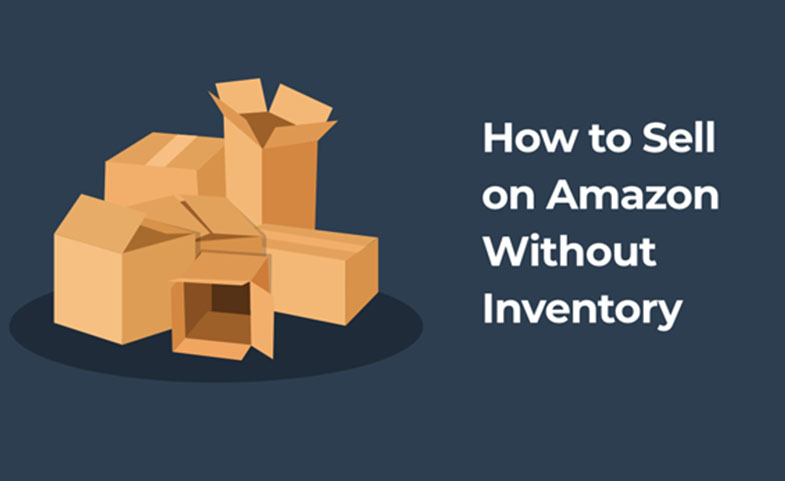In the ever-evolving landscape of e-commerce, entrepreneurs are discovering innovative ways to break into the market without the burden of managing inventory. Amazon, being a global giant in online retail, offers a platform that allows sellers to thrive without the need for hefty stockpiles.
Steps on how to sell on Amazon without inventory
Leverage Amazon's Fulfillment Services:
One of the game-changers in the world of e-commerce is Amazon's Fulfillment by Amazon (FBA) program. Instead of dealing with the complexities of storage, packing, and shipping, FBA enables sellers to send their products directly to Amazon's warehouses. When a sale occurs, Amazon takes care of order fulfillment, customer service, and even returns. This hands-off approach allows you to focus on what you do best – finding and marketing great products.
Pros:
- Effortless Logistics: Amazon takes care of storage, packing, and shipping.
- Prime Eligibility: Products become eligible for Amazon Prime, attracting a broader customer base.
- Customer Trust: FBA products are perceived as more reliable, enhancing customer trust.
Cons:
- Fees:FBA involves fees for storage, fulfillment, and other services.
- Limited Control:You relinquish some control over the fulfillment process to Amazon.
Dropshipping Dynamics:
Dropshipping is a popular method for entrepreneurs looking to minimize financial risks. In this model, you act as an intermediary between the customer and the supplier. When a customer places an order, the product is shipped directly from the supplier to the customer. Your role is to handle the transaction, marketing, and customer service. By integrating dropshipping with Amazon, you can build a lucrative business without ever touching the physical inventory.
Pros:
- Low Financial Risk: No need to invest in inventory upfront.
- Scalability: Easy to scale as you're not limited by storage space.
- Diverse Product Range: Can offer a wide range of products without the need for warehousing.
Cons:
- Quality Control: You rely on suppliers for product quality and timely shipping.
- Profit Margins: Higher competition can lead to lower profit margins.
Create a Unique Private Label:
Private labeling involves selling generic products under your own brand name. You can find suppliers who offer customizable products, allowing you to add your branding elements. Once you've established your brand, you can list these products on Amazon without holding inventory. This method provides a competitive edge, as customers start recognizing and trusting your brand.
Pros:
- Brand Recognition: Build a brand and customer loyalty.
- Higher Profit Margins: With a unique brand, you can often command higher prices.
- Control Over Listings: You have control over product listings and branding.
Cons:
- Upfront Costs: Initial investment in branding and marketing may be required.
- Risk of Branding: If not done properly, branding may not resonate with the audience.
Utilize Print on Demand (PoD):
If you have a talent for design or a knack for spotting trends, consider Print on Demand services. With PoD, products like T-shirts, mugs, and phone cases are created and shipped as they are ordered. Platforms like Amazon Merch enable you to upload your designs, and Amazon takes care of production, shipping, and customer service. It's a creative way to sell personalized products without investing in a single unit beforehand.
Pros:
- No Inventory Costs: Products are created only when ordered.
- Creative Freedom: Ideal for those with design skills or a creative flair.
- Low Risk: No need to purchase large quantities upfront.
Cons:
- Limited Product Range: PoD is suitable for certain product categories.
- Quality Control: Ensuring print quality and consistency can be challenging.
Kindle Digital Publishing (KDP)
Amazon KDP, or Kindle Digital Publishing, is like a DIY publishing tool for authors and publishers. It lets you easily publish your own books on Amazon, whether in digital format for Kindle or as physical print copies. You get to be the boss – add your name as the author, upload your manuscript and cover, set the price, and voila! Your book is available to Amazon's huge audience worldwide in the Kindle Store. It's a quick and straightforward process – just five to ten minutes, and your masterpiece is out there for the world to see!
Pros:
- No Fees: No upfront charges for using Amazon KDP.
- Quick Start: Easy and fast initiation of the publishing process.
- Global Reach: Access to a vast, global audience on Amazon.
- Control and Flexibility: Enhanced control over book details and pricing.
- Data and Analytics: Valuable insights for informed publishing strategies.
Cons:
- High Competition: Intense competition in the Amazon KDP marketplace.
Sell digital products
Digital products are things like eBooks, music, software, online courses, and templates that exist in digital form, requiring no physical materials.
Steps to Sell Digital Products on Amazon:
- Create Your Digital Product: Develop your eBook, music, software, or any other digital content.
- Set Up an Amazon Digital Services Account: Create a seller account on Amazon's Digital Services platform.
- Upload and Price Your Product: Add your digital product to Amazon, set your pricing, and you're ready to go.
- Amazon Handles Distribution: When a customer buys, Amazon takes care of the distribution, allowing immediate access to the purchased product.
Pros:
- High Profits: No material, manufacturing, or shipping costs for great profits.
- Infinite Reproduction: Sell digital products unlimited times without extra expenses.
- Diversification and Reach: Diversify offerings and reach a broader audience.
- Simplified Logistics: No worries about inventory, shipping, or fulfillment.
Cons:
- Competition: Highly competitive digital marketplace.
- Continuous Updates: Regular updates needed for relevance.
- Digital Security Concerns: Essential for protecting products from threats.
Conclusion:
Selling on Amazon without inventory requires strategic planning, dedication, and a keen understanding of market dynamics. By leveraging fulfillment services, exploring dropshipping models, creating private labels, embracing Print on Demand, and staying informed, you can build a successful Amazon business without the burden of managing physical stock. So, step into the world of inventory-free selling and unlock the door to endless possibilities.


